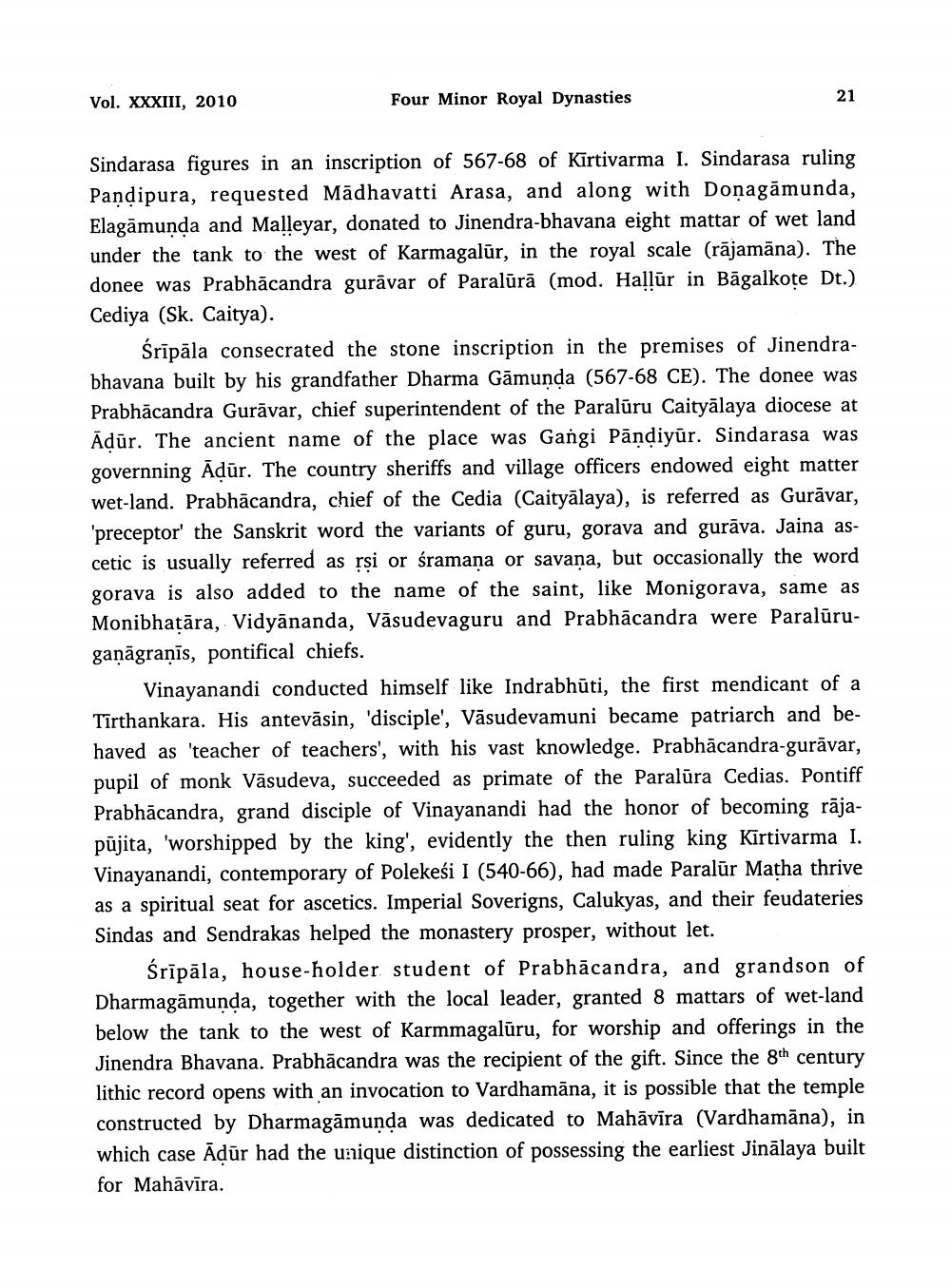________________
Vol. XXXIII, 2010
Four Minor Royal Dynasties
Sindarasa figures in an inscription of 567-68 of Kirtivarma I. Sindarasa ruling Pandipura, requested Madhavatti Arasa, and along with Donagāmunda, Elagāmunda and Malleyar, donated to Jinendra-bhavana eight mattar of wet land under the tank to the west of Karmagalūr, in the royal scale (rājamāna). The donee was Prabhācandra gurāvar of Paralūrā (mod. Hallūr in Bāgalkote Dt.) Cediya (Sk. Caitya).
Śrīpāla consecrated the stone inscription in the premises of Jinendra bhavana built by his grandfather Dharma Gāmunda (567-68 CE). The donee was Prabhācandra Gurāvar, chief superintendent of the Paralūru Caityālaya diocese at Ādūr. The ancient name of the place was Gangi Pāndiyūr. Sindarasa was governning Adūr. The country sheriffs and village officers endowed eight matter wet-land. Prabhācandra, chief of the Cedia (Caityālaya), is referred as Gurāvar, 'preceptor' the Sanskrit word the variants of guru, gorava and gurāva. Jaina ascetic is usually referred as sși or śramana or savana, but occasionally the word gorava is also added to the name of the saint, like Monigorava, same as Monibhatāra, Vidyānanda, Vāsudevaguru and Prabhācandra were Paralūruganägranīs, pontifical chiefs.
Vinayanandi conducted himself like Indrabhūti, the first mendicant of a Tirthankara. His antevāsin, 'disciple', Vāsudevamuni became patriarch and behaved as 'teacher of teachers', with his vast knowledge. Prabhācandra-gurăvar, pupil of monk Vāsudeva, succeeded as primate of the Paralūra Cedias. Pontiff Prabhācandra, grand disciple of Vinayanandi had the honor of becoming rājapūjita, 'worshipped by the king', evidently the then ruling king Kirtivarma I. Vinayanandi, contemporary of Polekesi I (540-66), had made Paralūr Matha thrive as a spiritual seat for ascetics. Imperial Soverigns, Calukyas, and their feudateries Sindas and Sendrakas helped the monastery prosper, without let.
Śrīpāla, house-holder student of Prabhācandra, and grandson of Dharmagāmunda, together with the local leader, granted 8 mattars of wet-land below the tank to the west of Karmmagalūru, for worship and offerings in the Jinendra Bhavana. Prabhācandra was the recipient of the gift. Since the 8th century lithic record opens with an invocation to Vardhamāna, it is possible that the temple constructed by Dharmagāmunda was dedicated to Mahāvīra (Vardhamāna), in which case Ādür had the unique distinction of possessing the earliest Jinālaya built for Mahāvīra.




